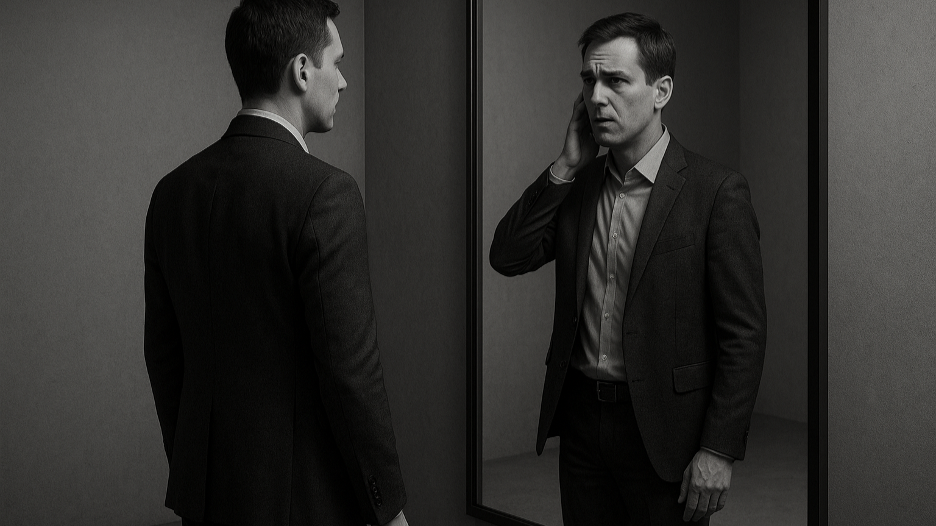Article
The Trust Advantage: Build It or Break It

Let's be brutally honest. In the cutthroat world of modern business, we obsess over metrics, strategies, and market share. We chase innovation, efficiency, and the next big disruption. But what if I told you that the single most powerful, yet often overlooked, asset in your leadership arsenal isn't a new technology or a groundbreaking business model, but something far more fundamental?
It's trust.
Research reveals that trust isn't just a "nice-to-have" soft skill; it's the bedrock of every high-performing team, the fuel for innovation, and the hidden engine of organizational success. Ignore it at your peril, because the cost of low trust isn't just a dip in morale—it's a direct hit to your bottom line, your talent pipeline, and your legacy as a leader.
The Uncomfortable Truth: Trust is Your Most Valuable Capital
Think of trust not as an abstract concept, but as tangible capital for your organization. It’s the "first step of genuine and effective leadership". Without it, people simply won't follow you. This isn't hyperbole; it's a stark reality backed by compelling data.
Companies with high trust factors report staggering benefits: 74% less stress, 13% fewer sick days, and a remarkable 40% less burnout among employees compared to their low-trust counterparts. This translates directly into reduced operational costs and a healthier, more engaged workforce. Employees in high-trust organizations are also 50% more likely to stay with their employer long-term, drastically cutting turnover costs and retaining invaluable talent.
Beyond retention, trust ignites collaboration. When your team trusts each other and you, they share ideas freely, seek help without hesitation, and work cohesively towards shared goals. This isn't just about being "nice"; it leads to more innovative solutions, superior problem-solving, and a cohesive, high-performing workforce. Google's own Project Aristotle, a deep dive into team effectiveness, concluded that high-performing teams are simply impossible without trust. It is the very bedrock for open communication and innovation.
A high-trust environment also minimizes micromanagement, granting employees the autonomy and confidence to make decisions and focus on meaningful work, boosting productivity and efficiency. And the ripple effect extends outward: employees who feel trusted and respected internally are far more likely to deliver exceptional customer service, enhancing brand loyalty and driving business growth.
So, if trust is so powerful, why do so many leaders struggle with it?
The Three Non-Negotiable Pillars: Where Leaders Often Stumble
Research has identified three fundamental pillars of trustworthiness: Ability, Integrity, and Benevolence. Here's the critical, often misunderstood, part: trustworthiness is a product of these three, not a sum. This means if you score a zero in any one of these areas, your overall trustworthiness plummets to zero, regardless of how stellar you are in the others.
Let that sink in. You can be a brilliant strategist (high Ability), but if your team perceives you as dishonest (zero Integrity), your trust account is empty. You can be the most ethical person in the room (high Integrity), but if you consistently fail to deliver on promises (zero Ability), trust evaporates. And perhaps the most insidious blind spot for many leaders: you can be competent and honest, but if you lack genuine care and kindness for your team (zero Benevolence), you will not be trusted.
Let's break them down:
- Ability: This is your professional competence – your skills, knowledge, and, most importantly, your consistent delivery on promises. As one CEO put it, "Trustworthiness is about doing what it says on the tin". If you say you'll do something, do it. Period.
- Integrity: This is "walking the talk." It's about being reliable in your behaviors, consistently upholding your values, and demonstrating honesty, openness, and fairness. Even a minor ethical slip from years ago can permanently damage a leader's perceived integrity.
- Benevolence: This is the genuine concern for the well-being of others – care, generosity, and kindness. The most potent destroyer of trust is the perception that you're acting solely in your own self-interest. Leaders who publicly humiliate or criticize team members, even if they are otherwise capable, will struggle to build trust due to a glaring lack of benevolence. It’s time to "re-humanize the workplace".
The Blueprint for Building Unshakeable Trust
Building trust is a deliberate, ongoing process. It requires conscious effort and consistent action. Here's how leaders who truly get it cultivate high-trust environments:
- Be Authentically Transparent and Accountable: Authenticity is the very foundation of trust. Be open about your intentions, share insights into decision-making, and, crucially, admit your mistakes. When you own your fallibilities, you create a psychologically safe environment where others feel safe to do the same. This vulnerability, counter-intuitively, builds immense trust.
- Practice Radical Empathy and Active Listening: Empathetic leaders genuinely value their employees' needs and desires. Respect is the "cornerstone of trust". This means not just hearing, but actively listening – giving full attention, asking clarifying questions, paraphrasing to confirm understanding, and empathizing with their feelings. It signals genuine value for their input and builds a deeper connection.
- Be a Beacon of Consistency and Reliability: Consistency is paramount, especially when paired with empathy. Your actions must consistently match your words. Reliability is, in fact, the top trust-building factor identified by business leaders, with 90% considering it important. When your team knows what to expect from you, uncertainty diminishes, and trust flourishes.
- Cultivate Mindfulness and Self-Awareness: This isn't just a wellness trend; it's a leadership imperative. Mindfulness enhances your cognitive capacity, flexibility, and ability to "re-perceive" situations objectively. It improves self-awareness and self-regulation, ensuring your actions align with your values, not just automatic reactions. A mindful leader is better equipped to exhibit all the behaviors necessary for building trust.
- Champion Fairness and Resolve Conflict: Leaders who fairly distribute rewards, maintain transparency, and enforce unbiased policies build trust. Addressing fears and resolving conflicts quickly and fairly strengthens team trust, enhancing collaboration and engagement.
The Silent Sabotage: How Leaders Accidentally Destroy Trust
Now for the uncomfortable part. Many leaders, often with good intentions, inadvertently erode trust through subtle behaviors that chip away at the foundation. These aren't always malicious acts, but rather blind spots that have devastating consequences:
- Inconsistent Actions and Unkept Commitments: You say one thing but do another. You make promises, even small ones, and fail to follow through. This gap between words and deeds is a trust killer, making teams feel unheard and disengaged.
- Lack of Transparency and Disengagement: You sideline key stakeholders in decisions, offer inconsistent messaging, or simply become physically or emotionally unavailable. This signals a profound lack of investment and erodes confidence, often without you even realizing the impact.
- Micromanagement and Disrespect for Time: You constantly hover, dictate every detail, or retract delegated tasks. This screams, "I don't trust you to do your job," leading to a reciprocal loss of trust. Similarly, frequent reschedules, unreturned messages, or unnecessary meetings signal that your team's time isn't valued, breeding resentment.
- Unethical Behavior and Compromising Values: Even a seemingly minor ethical lapse can permanently damage your integrity. When you compromise the organization's core values, your team notices, and their trust in your leadership crumbles.
- Ignoring Performance Issues: When a team member isn't pulling their weight or is negatively impacting the team, and you "look the other way," it demoralizes everyone else. It signals a lack of fairness and accountability, eroding trust in your leadership.
- Displaying Superiority or Losing Composure: Acting superior, undervaluing team perspectives, or losing your temper in communications makes employees feel disrespected and unheard.
- The "One-Size-Fits-All" Fallacy: Applying a uniform leadership style to diverse, multicultural teams can be perceived as autocratic and lead to a significant loss of trust, as it ignores crucial cultural nuances.
- Expecting Others to Earn Your Trust Without Reciprocating: You demand trust from your team, but you don't extend it first. Healthy relationships, including professional ones, are never one-sided.
- The Passive "My Door Is Always Open": Simply saying "my door is always open" is not enough. If you don't actively seek input, schedule check-ins, and create safe spaces for dialogue, many voices will remain unheard, and trust will not grow.
The Devastating Fallout: What Happens When Trust Dies
The consequences of low trust are not theoretical; they are devastatingly real:
- Disengagement and High Turnover: Energy and enthusiasm drain away. Individuals feel undervalued, leading to high turnover rates, decreased productivity, and widespread dissatisfaction.
- Friction and Unresolved Conflict: Without trust, conflicts escalate. Teams avoid addressing issues, engage in "polite nodding" without genuine agreement, or resort to passive-aggressive behaviors and gossip, creating a toxic atmosphere.
- Stifled Innovation: The fear of rejection or ridicule suppresses creativity. Teams hesitate to propose new ideas or challenge the status quo, leaving the organization stagnant and vulnerable to competitors.
- Lack of Feedback and Misunderstandings: Team members are reluctant to give or seek feedback, fearing judgment or repercussions. This means valuable insights go unshared, and opportunities for growth are missed. Negative assumptions about intentions lead to strained relationships and a focus on self-protection over collaboration.
- Low Confidence and Indecision: Individuals second-guess their abilities, doubt decisions, and hesitate to take risks, further stifling creativity and progress.
Your Call to Action: Reclaim Your Superpower
Trust is not built overnight, nor is it maintained passively. It requires consistent, deliberate effort. If trust has been eroded, it can be rebuilt, but it demands honesty, humility, and sustained action. Acknowledge your missteps, own them, and commit to consistent behaviors that prove your reliability over time. Re-engage with your team, prioritize benevolence, and shift from demanding trust to actively earning it.
In today's complex and rapidly changing world, trust is not just a competitive advantage; it's a prerequisite for survival. Leaders who master the art and science of building and sustaining trust will not only foster more engaged, innovative, and productive teams but will also forge a legacy of true, impactful leadership.
Are you ready to unlock your ultimate leadership superpower? The choice, and the action, is yours.
share this
Related Articles
Related Articles





